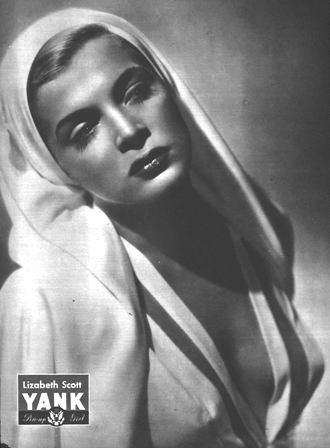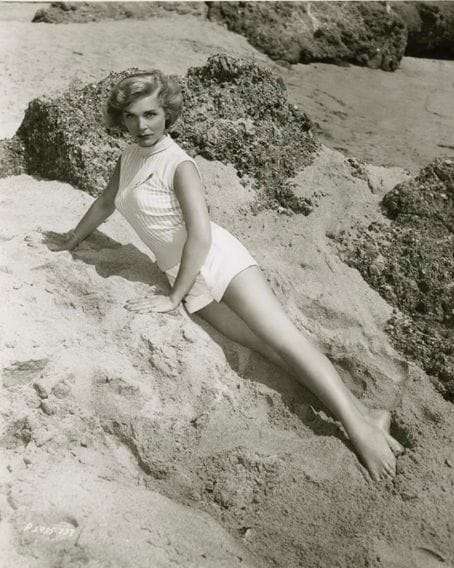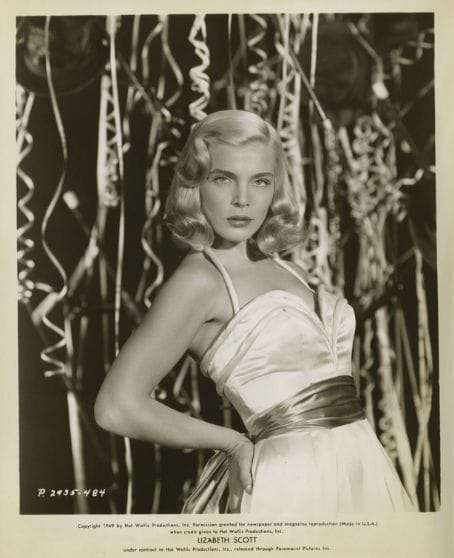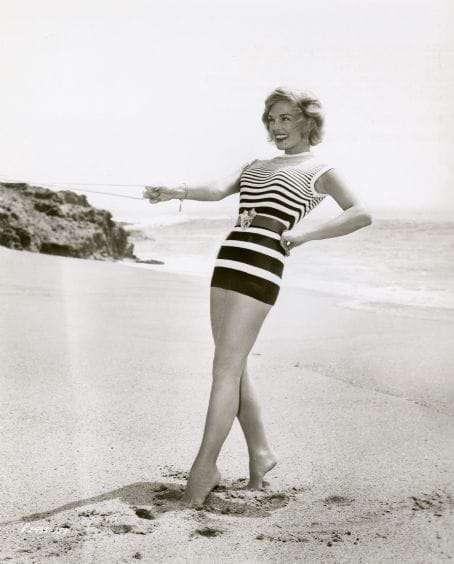

Lizabeth Scott: A Noir Star’s Legacy
Lizabeth Scott – a name that echoes through the corridors of classic Hollywood. With a voice like a whiskey-soaked whisper and a screen presence drenched in intrigue, she was a shining star of the film noir era. Born Emma Matzo, Scott transformed herself from a Scranton girl into one of the most enigmatic femme fatales to ever grace the silver screen. This article explores her fascinating life, career, and the shadows she lit up with her sultry glare.
From sharing screen space with Humphrey Bogart to going head-to-head with scandal magazines, Lizabeth Scott’s story is as compelling as any noir script she starred in. Let’s journey through her Hollywood saga—timeless, bold, and wrapped in mystery.
Early Life of Lizabeth Scott: From Emma to Enigma
Born on September 29, 1922, in the Pine Brook section of Scranton, Pennsylvania, Lizabeth Scott entered the world as Emma Matzo. Her parents, John and Mary Matzo, were devout Roman Catholic immigrants from Slovakia who instilled in her a solid foundation of values. She pursued early education at Central High School and Marywood College, already displaying a spark of ambition that would soon ignite into a burning desire for the arts.
Lizabeth Scott’s Stage Debut: The Skin of Our Teeth
In 1942, Scott’s theatrical pursuits began to bear fruit when she secured a role as an understudy for Tallulah Bankhead in the critically acclaimed play The Skin of Our Teeth by Thornton Wilder. Although she never took Bankhead’s place, fate soon spun its web in her favor. When another actress fell ill, Scott stepped into the lead role of Sabina. She was only 20, yet critics took notice of the fresh, poised, and magnetic performer who had emerged seemingly overnight.
That performance lit the fire under her career. The show went on the road, and so did Scott—carving out her place not just in theatre, but soon in the land of lights and cameras.

The Moment Hollywood Noticed Lizabeth Scott
It wasn’t long before Hollywood came calling. While Scott was dining at the famed Stork Club, producer Hal Wallis spotted her, unaware he had already arranged to meet her the next day. Coincidence or destiny? Perhaps both. A modeling shot in Harper’s Bazaar had already caught the eye of agent Charles Feldman, who helped arrange her first screen test at Warner Bros. Though the test wasn’t great, Wallis saw her potential.
Rebranding Emma Matzo: Becoming Lizabeth Scott
Originally billed as “Elizabeth” during the Skin of Our Teeth Broadway run, Scott dropped the “E” to stand out. It was a small change, but one that symbolized her break from her past. The transformation was complete. Emma Matzo was no more—Lizabeth Scott, sultry starlet of the silver screen, was born.
Lizabeth Scott’s Film Debut: You Came Along (1945)
Scott’s film career officially began with You Came Along (1945), starring opposite Robert Cummings. Paramount’s marketing dubbed her “The Threat”—a persona designed to echo the mysterious aura of stars like Lauren Bacall or Veronica Lake. And it worked. With her smoky allure and husky voice, she was tailor-made for the film noir genre.
The Queen of Film Noir: Breaking Records and Stereotypes
What followed was a string of noir masterpieces. The Strange Love of Martha Ivers (1946), Dead Reckoning (1947) alongside Bogart, Desert Fury (1947), I Walk Alone (1948), and the unforgettable Too Late for Tears (1949). Film historian Eddie Muller aptly noted that Scott appeared in more noirs than any other actress. Over 75% of her 20 films fall into the genre. She wasn’t just a femme fatale—she was the femme fatale.
Her portrayal of women who were cunning, seductive, and unapologetically powerful redefined what it meant to be a leading lady in an era of damsels in distress.

Working With the Greats: Bogart, Stanwyck, and Lancaster
Scott’s filmography reads like a who’s who of Hollywood legends. From sharing scenes with Barbara Stanwyck and Van Heflin to standing equal on promotional posters with Humphrey Bogart, she wasn’t overshadowed—she stood her ground. By age 25, her image on a movie poster could match Bogart’s. That’s no small feat in the male-dominated world of mid-century Hollywood.
A Colorful Noir: Lizabeth in Technicolor
One of the more unusual entries in Scott’s career was Desert Fury, a film noir shot in Technicolor. The film cast her as a rich girl tangled with dangerous men, played by John Hodiak and Burt Lancaster. It brought vivid hues to a genre known for its stark shadows, and Scott’s performance added emotional depth to the blazing visuals.
A Pioneering Lead Role: Too Late for Tears
In Too Late for Tears, Scott played a female lead with agency and ambition—rare for women in 1940s cinema. She portrayed a woman driven by greed, willing to kill to keep a suitcase of money. It’s a standout film not only for its intensity but for placing a woman at the center of the noir storm.

Changing Her Name, Changing the Rules
After using “Lizabeth Scott” professionally for over four years, she legally changed her name in 1949. This formal move wasn’t just paperwork—it was a declaration. She had become her own creation, on her own terms.
Confronting the Tabloids: A Battle for Reputation
In 1955, scandal struck. Confidential magazine alleged Scott had ties to a call-girl ring and suggested associations with what they called “baritone babes.” Scott sued the publication, though the case was dismissed on a technicality. Still, she stood her ground, a rarity in an era where women were often silenced.
A Star Opposite the King: Loving You with Elvis Presley
In Loving You (1957), Scott played a manager guiding a young singer played by Elvis Presley. The film marked her final screen appearance—though it wasn’t her farewell to the spotlight.sts.
Lizabeth: The Music Album
The same year, Scott recorded an album titled Lizabeth, featuring love ballads and torch songs. It was a sonic extension of her screen persona—sensual, melancholic, and expressive. The album is still available today, resonating with classic Hollywood glamour.
The Quiet Years: Life Beyond the Silver Screen
Though Scott stepped away from acting, she never stopped learning. She took classes at the University of Southern California and lived a mostly private life. Still, she popped up occasionally—on television, in tributes, or at exclusive events.Final Curtain Call: A Last Film and Final Appearances
Legacy of Lizabeth Scott
Lizabeth Scott didn’t need dozens of films or tabloid headlines to etch her name in history. Her body of work—lean, intense, and unforgettable—cemented her as one of film noir’s great icons. Her star on the Hollywood Walk of Fame at 1624 Vine Street is just the beginning of her legacy.
Lizabeth Scott
Scott’s story reminds us that reinvention isn’t just possible—it’s powerful. From Emma Matzo to Lizabeth Scott, she redefined not just herself, but an entire genre. She may have vanished from public view, but her shadow still lingers across every rain-slicked street and smoke-filled alley of noir cinema.
FAQs
Was Lizabeth Scott ever married?
No, she never married and had no children. She kept her private life closely guarded.
Did Lizabeth Scott win any major awards?
While she didn’t win major industry awards, she earned a star on the Hollywood Walk of Fame and deep respect from noir historians.
Was she really involved in a scandal?
She was linked to a 1955 Confidential magazine scandal but sued in response. The suit was dismissed, and no evidence supported the claims.
Why did she change her name?
To stand out in Hollywood. Dropping the “E” from Elizabeth was a branding choice—simple yet bold.
What made her voice so distinctive?
Her husky, smoky voice became her signature. It matched her sultry screen presence perfectly, adding depth to her noir roles.
Where can I watch her films today?
Many of her classics are available on DVD, Blu-ray, and streaming platforms like Amazon Prime and iTunes.
Conclusion
Lizabeth Scott’s legacy is one of transformation, strength, and timeless appeal. She dominated an era without bending to it. Her films continue to captivate, and her life inspires those who choose to rewrite their stories—on their terms. In a genre defined by shadow, Scott was pure starlight.
